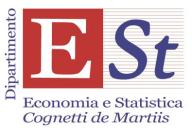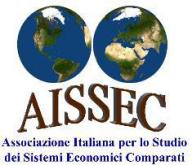By Hans Timmer[1]
Acemoglu, Johnson, and Robinson have been awarded the 2024 Nobel Prize in Economic Sciences for their studies of how institutions are formed and affect prosperity. They have developed evidence that exploitive institutions are inadequate for long-run growth, while inclusive ones are good for it. This evidence fits a broader cross-country literature that argues that economies thrive when the rule of law guarantees equal opportunities.
These critical results shed light on key puzzles in development economics: Why is per-capita income in the most developed countries 100 times the per-capita income in the least developed countries? Are poorer countries prone to catch up with more affluent countries, or are they likely to fall further behind? The Nobel laureates conclude that income gaps might widen further because of strong inertia in the development of institutions. This research leads to a welcome focus in economics on institutions.
However, cross-country analysis has severe limitations and might even be misleading. Let’s consider three main arguments for why this is the case:
- Countries are often not useful units of analysis as they can be radically different. With its 1.4 billion people, China is incomparable with Brunei, home to less than half a million citizens. India is, in several respects, more diverse than the whole of Europe.
- Countries themselves are not uniform. Income inequality within countries can be huge. Part of the population in poor countries can be significantly richer than most people in rich countries. Coastal cities in poor countries can be very similar to coastal cities in rich countries, while the average income in poor countries is pulled down by great inequality between coastal cities and rural inland areas.
- A key problem of cross-country analysis is that the causes of underdevelopment are not merely located within poor countries but are often rooted in the relationship between countries. Income gaps between countries are not merely the result of bad policies within poor countries but rather the lack of a level playing field internationally. In the same way, inequality of opportunity within countries is not caused by the bad behaviour of the underprivileged but rather by elite capture that strengthens the vested interests of the privileged. Such inequality of opportunity, which explains a significant share of inequality within countries, does not stop at the borders of nations but is also a key determinant of global inequality.
Standard cross-country analysis explains why efficiency in a poor country is lower than in a rich country. However, this is not the proper description of inequality of opportunity. Inequality of opportunity is caused by a lack of a level playing field: poorer people, regions, or countries have the same potential but do not have the same access to capital or jobs. Privileged groups get preferential access to capital through elite capture and limit the number of good jobs through insider-outsider policies. Inequality of opportunity should be described with identical levels of efficiency but with differentiated access to capital and jobs. In other words, the segmentation of factor markets prevents everybody from fully utilizing their potential.
In the case of a level playing field, with perfect capital and labour mobility, capital-labour ratios would be the same everywhere if efficiency levels do not differ. Therefore, per-capita income would also be the same everywhere. However, in the case of segmented labour markets, capital-labour ratios and incomes can be very different. The higher per-capita income is in one group, the lower per-capita income is in the other. It is easy to show that the average income for both groups is lower than in the case of a level playing field. So, inequality of opportunity leads not only to unfair income inequality but also to overall inefficiency.
Such a simple model of inequality of opportunity could be a good description of a dual economy in developing countries with a formal and an informal sector. Elite capture, connected lending, and artificially high formal wages keep capital intensity high and employment low in the formal sector. The result is scarcity of capital, abundant labour, and low incomes in the informal sector. The model could also be applied to inequality of opportunity in education when groups with a particular background have limited access to education (human capital). Or the model can be used to describe gender inequality when women are not allowed to take certain jobs. And, of course, capital and labour are not freely floating across countries because of migration restrictions and limitations to capital and technology flows.
The observation that the inefficiency of poor people does not necessarily cause income inequality but is often the result of policies that protect the vested interests of the privileged has huge consequences for development policies. It means that reducing inequality requires confronting elite capture. My experience at the World Bank has been that this is easier said than done. The elite are the direct counterparts of the World Bank, and confronting vested interests head-on is seldom effective. Let’s look at four of the many lessons we have learned while navigating the political economy of development.
The first lesson is that vested interests are not uniform and can be contradictory. Those conflicts can be used to confront specific vested interests. For example, China was willing to consider many reforms, but liberalizing the domestic financial sector was a taboo. The financial sector was used to stimulate the domestic economy and to support the many state-owned enterprises. Surplus funds in those enterprises had led to investments in real estate and a destabilizing shadow banking sector. It was a clear example of preferential access to capital, and it was impossible to address this problem head-on. However, Chinese authorities realized at the same time the advantages of developing the renminbi into an international reserve currency. To achieve that, first, more trade must be denominated in the renminbi; then offshore capital markets should be developed; and, finally, the domestic financial sector must be liberalized. This reasoning indirectly opened the debate about reforms in the financial sector.
The second lesson is that evidence of inefficiencies is powerful. That is true at the macro level. Even if preferential treatment benefits elites in the short run, they might benefit more if overall income increases by reducing inequality of opportunity. A larger overall income will further spur growth through multiplier and accelerator effects. Those in power might be willing to give up some of the vested interests in exchange for the additional overall growth. It is also true at the micro level. I met a group of women in Karachi who used to work informally from home, selling their products at low prices to middlemen in the garment industry. Their husbands did not allow their women to work out of the house. Despite opposition, the women had recently started organizing themselves and circumventing the middlemen. As a result, their income tripled, and as the overall family income increased, the husbands supported working in a central place for the women. An increase in overall income is a powerful argument against inequality of opportunity.
The third lesson is that technological progress is not neutral. Depending on accommodating policies, innovations can benefit everybody or sharply increase inequality. The World Development Report 2016 (Digital Dividends) argued that the new digital technologies could have radically different outcomes. The technologies could make governments more accountable, but governments could also use them to suppress citizens. Digital technologies could lower entry costs for small new firms but could also lead to the concentration of monopoly power. The new technology could increase workers' real incomes but could also lead to a digital divide. In their recent book Power and Progress, Acemoglu and Johnson provide much broader evidence of the potentially biased nature of technology. They argue that, in many cases, new technologies hurt most people, while only a tiny elite greatly benefited. For development practitioners, it is crucial to recognize this biased nature of technological progress and to firmly focus on accommodating policies.
The fourth lesson is that a good crisis should never be wasted. Both global and local crises present opportunities for fundamental reforms because they weaken vested interests, which were often the root causes of the crises. That means that development policies should be ambitious after a crisis by eliminating pre-crises inequalities of opportunities.
Reducing inequalities of opportunity requires confronting vested interests. It is not easy to confront the vested interests of privileged groups directly. But there are ample opportunities to unleash societies' full potential by levelling the playing field. That is the ultimate goal of development economics.









